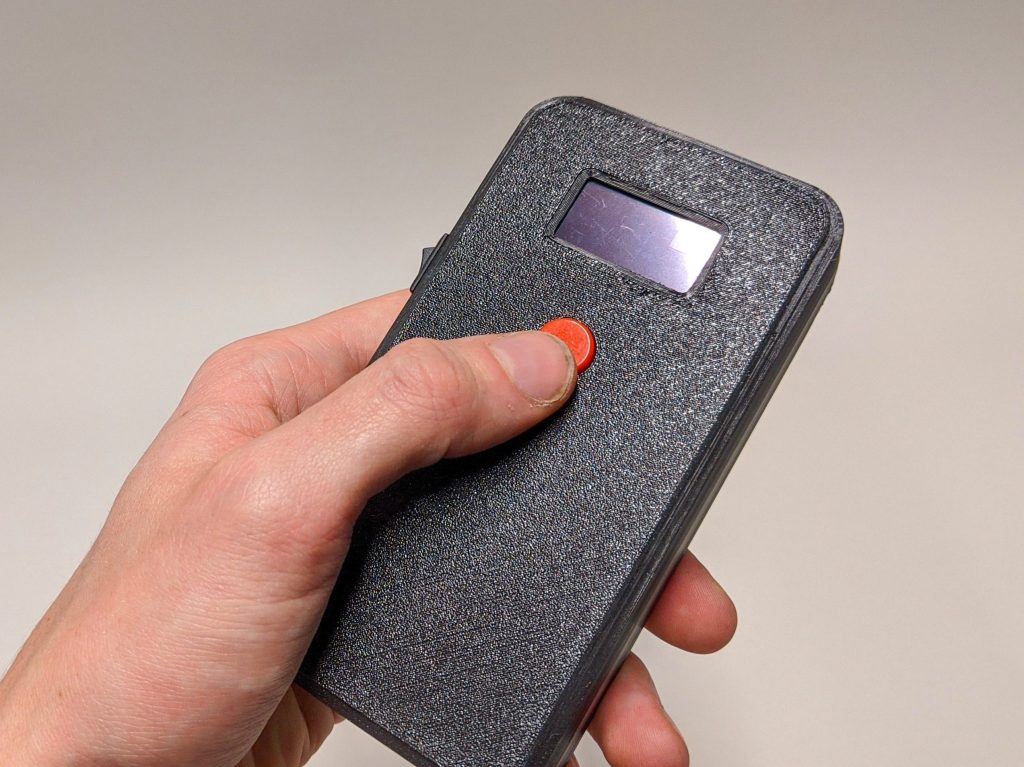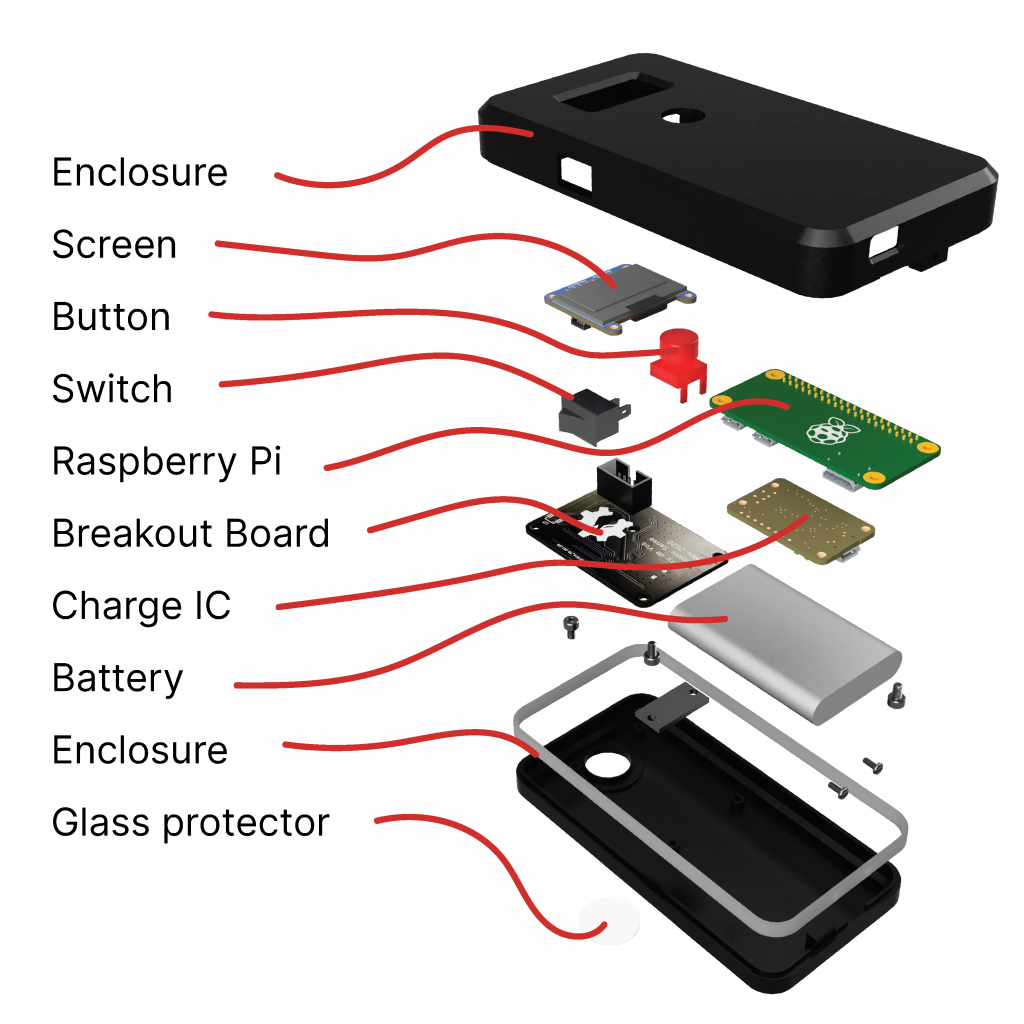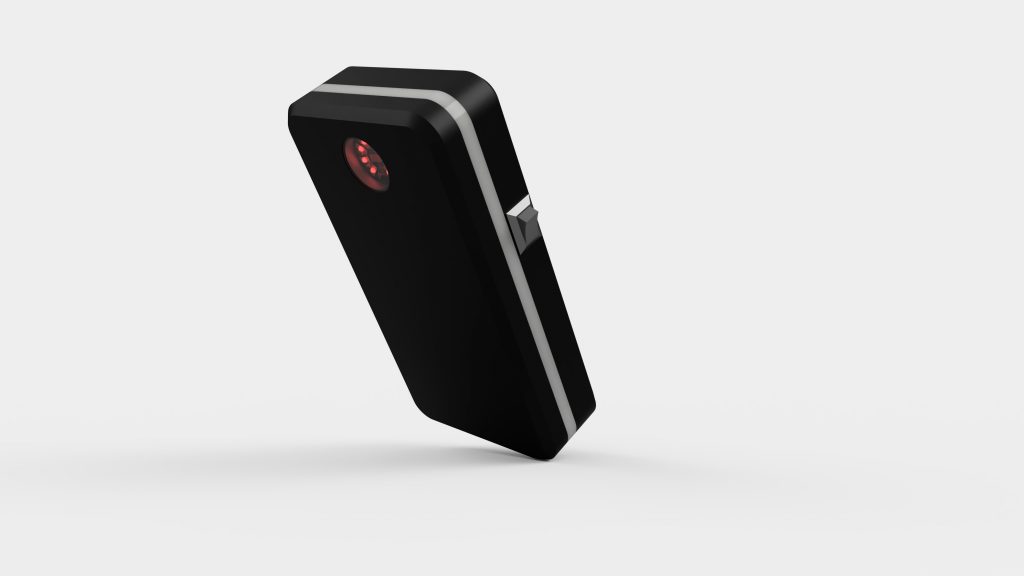The handheld scanner connects the breakout board to real-world applications. In this case, the application is adapted to the Ocean Cleanup case described in chapter 2.4. It features a 3D printed enclosure that holds the breakout board, a Raspberry Pi Zero W, a 1.3-inch OLED display, and a button interface. It is powered by a 2.200mAh battery.

Description of the handheld scanner
The handheld scanner puts the breakout board into practice by adding a 1GHz processor with wireless capabilities in the form of a Raspberry Pi Zero W. This minicomputer communicates over SPI with the breakout board and displays the predictions on a 1.3-inch OLED screen. The Raspberry Pi is a popular development board with great community support, making it possible to easily run machine learning models on the handheld scanner itself. It is an all-in-one package, with local machine learning interpretation, simple storage on an SD-card, and easy (wireless) communication with the user. An overview of the way it works can be seen in below.


| Components | Description |
|---|---|
| 3D printed enclosure | Having the enclosure consist of 3 parts makes it easy to print and adjust to the needs of the user. Components are mounted with threaded inserts to ensure reusability. |
| Breakout board | Features of the breakout board described in chapter 5.2 |
| Raspberry Pi Zero W | The main processor of the scanner. It feeds the measurement data of the breakout board into a machine learning algorithm and controls all input and output. |
| 1.3 inch OLED screen | Graphical output for user, guides user through processing section and displays predicted plastic type, quality of the prediction, and battery indication/levels. |
| Button | Allows the user to start the scanning procedure. |
| Battery management chip | Controls the voltage of the battery and enables charging. |
| Battery | 2.200mah battery with 5-hour usage. |
| Glass protector (optional) | Protects the sensor from debris. |
| Foam protector | Protects the sensor from external light. |
| Bolts | M3 5mm screws to fasten the breakout board and the Raspberry Pi. |
Functioning of the handheld scanner
After the user has turned on the handheld scanner, the screen tells them to push the scanning button once a scan is desired. As soon as the Raspberry Pi recognizes that the button is pressed it sends a command to the breakout board, which starts the scanning procedure. Once the scanning is completed it is communicated back to the Raspberry Pi, which subsequently starts the interpretation algorithm to interpret the sample. Once this is completed the result is shown on the screen (table 5.3 & figure 5.7).
The handheld scanner presented in this thesis encases the breakout board adjusted to the context of The Ocean Cleanup, as described in chapter 2.4. Although the design of the handheld scanner focuses on this exact application, parts of this design can also be used in other contexts, for example, the enclosure itself and the display method. The components of the scanner are sourced from the same locations as the components of the breakout board, preventing increased complexity in the need for the product to be able to be manufactured locally. A website where everyone can access the source files to 3D print the enclosure, as well as the other assembly instructions, enables open development.
| Part number | Part Description | Quantity | Cost |
|---|---|---|---|
| 1 | Breakout board | 1 | €176.97 |
| 2 | Raspberry Pi Zero | 1 | €10.00 |
| 3 | SD card | 1 | €10.30 |
| 4 | Charge IC | 1 | €19.95 |
| 5 | 1.3 inch oled screen | 1 | €19.95 |
| 6 | Switch | 1 | €0.31 |
| 7 | Button | 1 | €2.50 |
| 8 | Battery | 1 | €14.95 |
| 9 | Glass protector | 1 | €1.20 |
| 10 | M3 bolt 5mm | 8 | €0.11 |
| 11 | IDC cable | 1 | €2.00 |
| 12 | Qwicc cable | 1 | €0.95 |
| 13 | Heat inserts m3 3mm | 4 | €0.12 |
| 14 | 3D print Top | 1 | €0.80 |
| 15 | 3D print Middle | 1 | €0.10 |
| 16 | 3D print Bottom | 1 | €0.67 |
| Total cost Handheld scanner | €261.99 |


